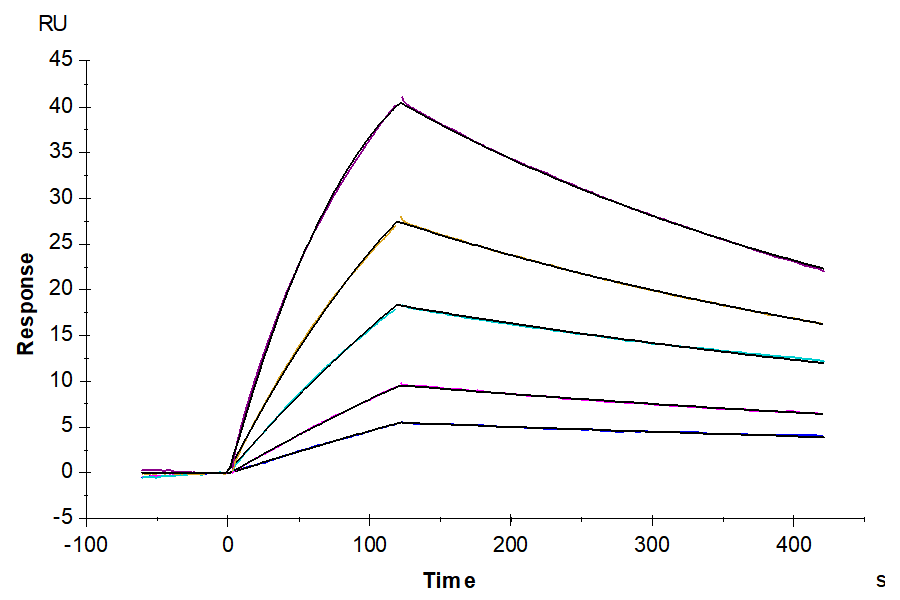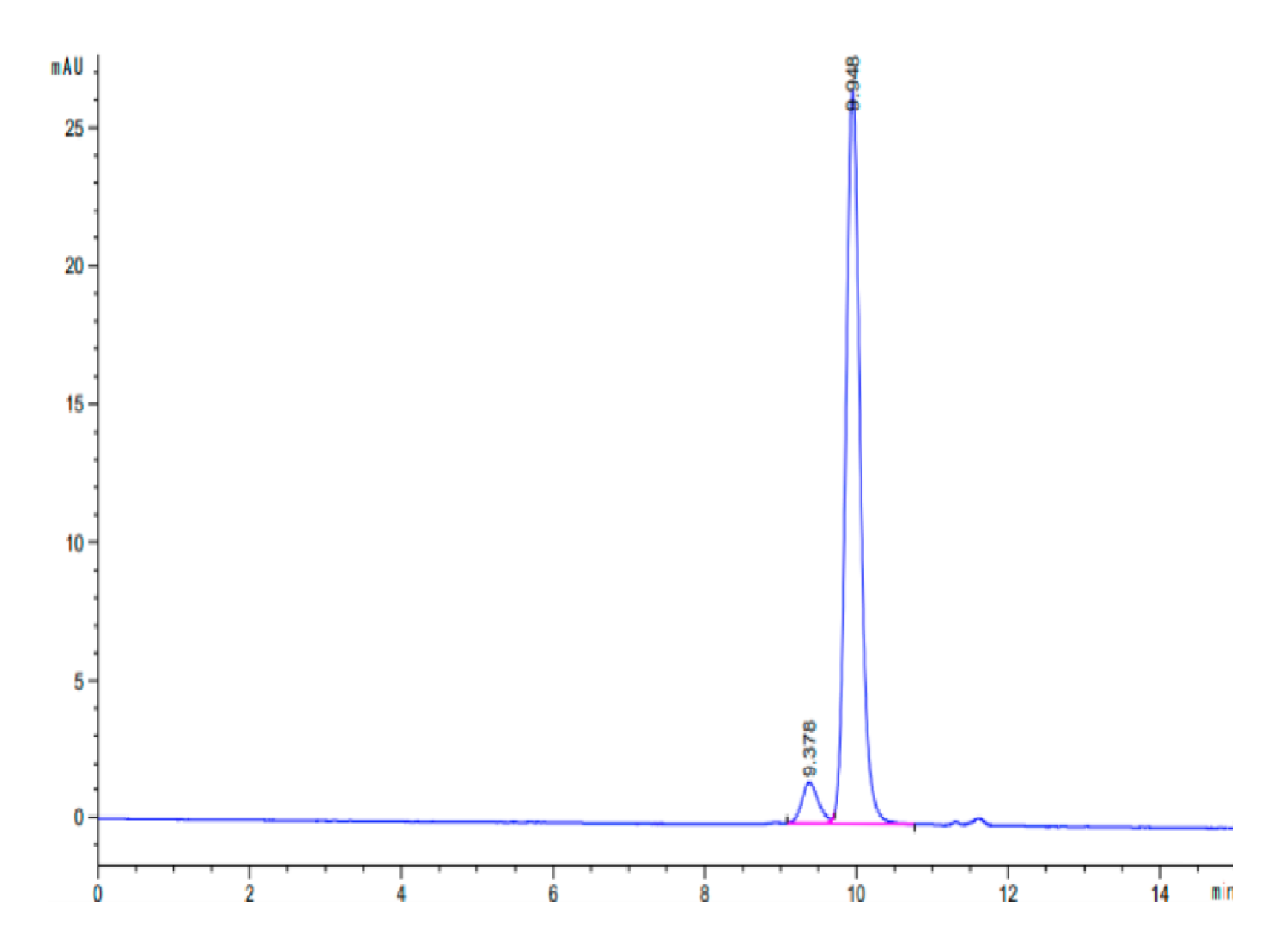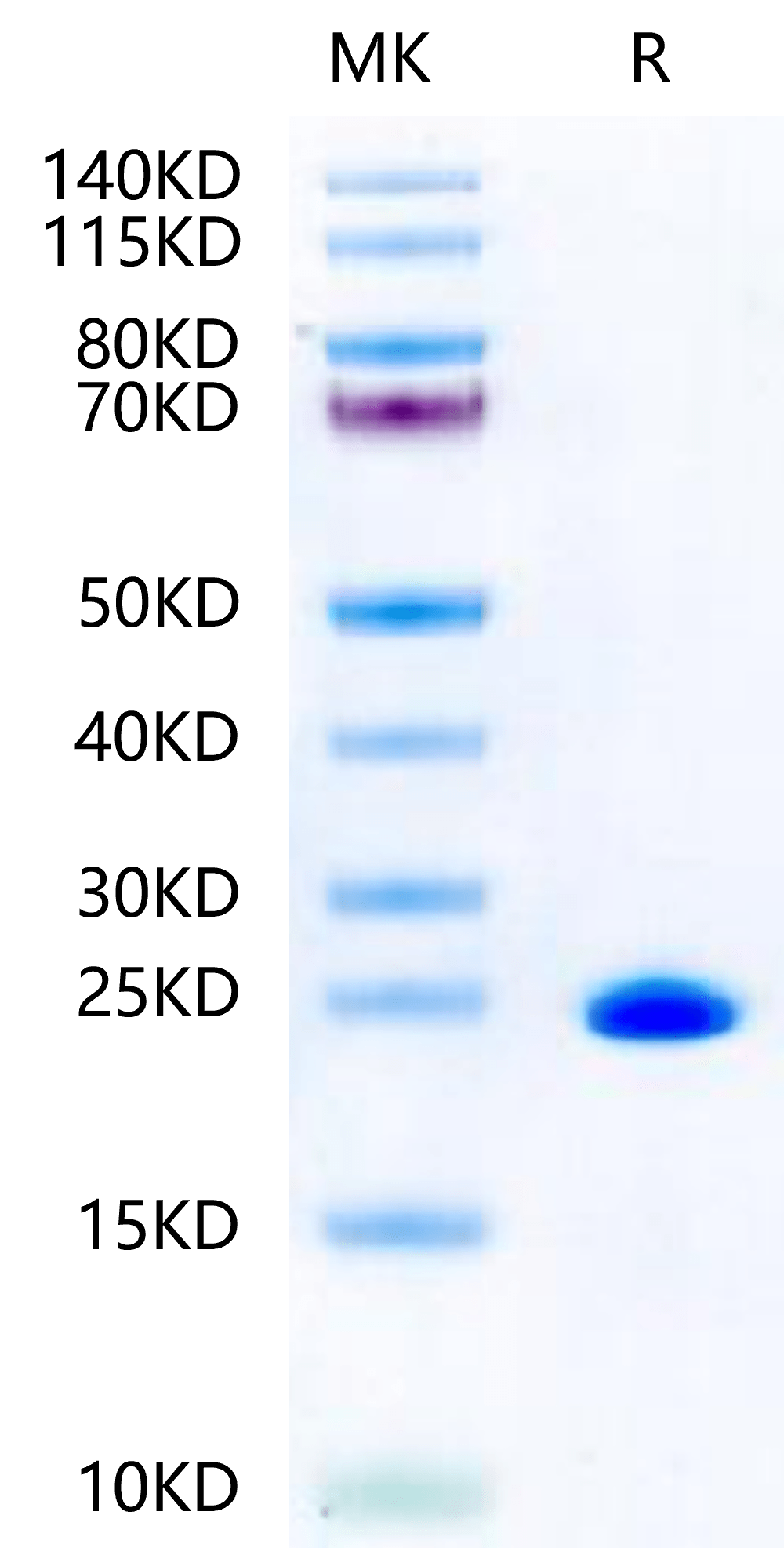| Weight | 1 lbs |
|---|---|
| Dimensions | 9 × 5 × 2 in |
| accession | EDK99650 |
| express system | E.coli |
| product tag | C-His |
| purity | > 95% as determined by Tris-Bis PAGE;> 90% as determined by HPLC |
| background | Bid, BH3-interacting domain death agonist, was initially cloned based in its ability to interact with both Bcl-2 and Bax. Bid contains only the BH3 domain, which is required for its interaction with the Bcl-2 family proteins and for its pro-death activity. Bid is susceptible to proteolytic cleavage by caspases, calpains, Granzyme B and cathepsins. Bid is important to cell death mediated by these proteases and thus is the sentinel to protease-mediated death signals. |
| molecular weight | The protein has a predicted MW of 22.72 kDa same as Tris-Bis PAGE result. |
| available size | 100 µg, 500 µg |
| endotoxin | Less than 1EU per μg by the LAL method. |
Mouse BID Protein 2433
$345.00 – $1,150.00
Summary
- Expression: E.coli
- Binding assay: Yes (SPR)
- Amino Acid Range: Ala1-Ser195
Mouse BID Protein 2433
| protein |
|---|
| Size and concentration 100, 500µg and lyophilized |
| Form Lyophilized |
| Storage Instructions Valid for 12 months from date of receipt when stored at -80°C. Recommend to aliquot the protein into smaller quantities for optimal storage. Please minimize freeze-thaw cycles. |
| Storage buffer Shipped at ambient temperature. |
| Purity > 95% as determined by Tris-Bis PAGE |
| target relevance |
|---|
| Bid, BH3-interacting domain death agonist, was initially cloned based in its ability to interact with both Bcl-2 and Bax. Bid contains only the BH3 domain, which is required for its interaction with the Bcl-2 family proteins and for its pro-death activity. Bid is susceptible to proteolytic cleavage by caspases, calpains, Granzyme B and cathepsins. Bid is important to cell death mediated by these proteases and thus is the sentinel to protease-mediated death signals. |
| Protein names BH3-interacting domain death agonist (p22 BID) (BID) [Cleaved into: BH3-interacting domain death agonist p15 (p15 BID); BH3-interacting domain death agonist p13 (p13 BID); BH3-interacting domain death agonist p11 (p11 BID)] |
| Mass 21995Da |
| Function Induces caspases and apoptosis (PubMed:14583606). Counters the protective effect of BCL2 (By similarity). {ECO:0000250|UniProtKB:P70444, ECO:0000269|PubMed:14583606}.; [BH3-interacting domain death agonist p15]: Induces caspase activation and apoptosis (PubMed:15661737, PubMed:32029622). Allows the release of cytochrome c (PubMed:32029622). {ECO:0000269|PubMed:15661737, ECO:0000269|PubMed:32029622}.; [Isoform 1]: Induces ICE-like proteases and apoptosis. {ECO:0000269|PubMed:14583606}.; [Isoform 2]: Induces ICE-like proteases and apoptosis. {ECO:0000269|PubMed:14583606}.; [Isoform 3]: Does not induce apoptosis. {ECO:0000269|PubMed:14583606}.; [Isoform 4]: Induces ICE-like proteases and apoptosis. {ECO:0000269|PubMed:14583606}. |
| Subellular location Cytoplasm {ECO:0000269|PubMed:14583606}. Mitochondrion membrane {ECO:0000269|PubMed:14583606}. Mitochondrion outer membrane {ECO:0000269|PubMed:29531808}. Note=When uncleaved, it is predominantly cytoplasmic. {ECO:0000269|PubMed:14583606}.; [BH3-interacting domain death agonist p15]: Mitochondrion membrane {ECO:0000250|UniProtKB:P70444}. Note=Translocates to mitochondria as an integral membrane protein. {ECO:0000250|UniProtKB:P70444}.; [BH3-interacting domain death agonist p13]: Mitochondrion membrane {ECO:0000250|UniProtKB:P70444}. Note=Associated with the mitochondrial membrane. {ECO:0000250|UniProtKB:P70444}.; [Isoform 1]: Cytoplasm {ECO:0000269|PubMed:14583606}.; [Isoform 3]: Cytoplasm {ECO:0000269|PubMed:14583606}.; [Isoform 2]: Mitochondrion membrane {ECO:0000269|PubMed:14583606}. Note=A significant proportion of isoform 2 localizes to mitochondria, it may be cleaved constitutively. {ECO:0000269|PubMed:14583606}. |
| Tissues [Isoform 2]: Expressed in spleen, pancreas and placenta (at protein level). {ECO:0000269|PubMed:14583606}.; [Isoform 3]: Expressed in lung, pancreas and spleen (at protein level). {ECO:0000269|PubMed:14583606}.; [Isoform 4]: Expressed in lung and pancreas (at protein level). {ECO:0000269|PubMed:14583606}. |
| Structure Forms heterodimers either with the pro-apoptotic protein BAX or the anti-apoptotic protein BCL2 (By similarity). Interacts with PLEKHN1 (PubMed:29531808). {ECO:0000250|UniProtKB:P70444, ECO:0000269|PubMed:29531808}.; [BH3-interacting domain death agonist]: Interacts with humanin; forms fibers with humanin which results in BID conformational changes and sequestering of BID into the fibers, preventing BID activation. {ECO:0000269|PubMed:15661737, ECO:0000269|PubMed:33106313}.; [BH3-interacting domain death agonist p15]: Interacts with ITCH (PubMed:20392206). Interacts with humanin; the interaction prevents BID-induced apoptosis (PubMed:15661737). Interacts with MTCH2 (By similarity). {ECO:0000250|UniProtKB:P70444, ECO:0000269|PubMed:15661737, ECO:0000269|PubMed:20392206}. |
| Post-translational modification [BH3-interacting domain death agonist]: TNF-alpha induces caspase-mediated cleavage into a major p15 and minor p13 and p11 products (By similarity). Cleaved by CASP6 into a major p15 and minor p13 products, leading to release of cytochrome c and subsequent nonalcoholic steatohepatitis (PubMed:32029622). {ECO:0000250|UniProtKB:P70444, ECO:0000269|PubMed:32029622}.; [BH3-interacting domain death agonist p15]: Ubiquitinated by ITCH; ubiquitination results in proteasome-dependent degradation. {ECO:0000269|PubMed:20392206}. |
| Domain Intact BH3 motif is required by BIK, BID, BAK, BAD and BAX for their pro-apoptotic activity |
| Target Relevance information above includes information from UniProt accession: P55957 |
| The UniProt Consortium |
Data
Publications
Publications
| pmid | title | authors | citation |
|---|---|---|---|
| We haven't added any publications to our database yet. | |||
Protocols
| relevant to this product |
|---|
Documents
| # | ||
|---|---|---|
| Please enter your product and batch number here to retrieve product datasheet, SDS, and QC information. | ||

















